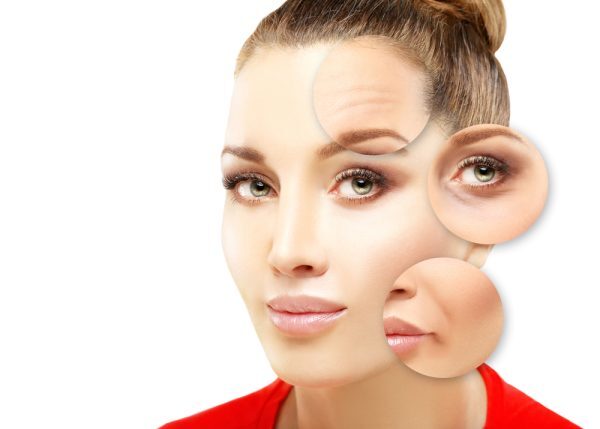For most people, as they get older, notice that it is harder to reduce the appearance of wrinkles and fine lines. This can lead to a lot of frustration, especially when purchasing over-the-counter anti-wrinkle treatments which will boast of being able to rejuvenate your look.
In the past, the only way that many people could reduce the appearance of wrinkles was to get a facelift. But in today’s setting and cosmetic care, that is considered excessive and there are now non-surgical facial aesthetics that can offer similar results without leaving scars.
So, if you have had enough of using skin treatments that don’t seem to be working to reduce the appearance of your wrinkles, you may want to consider a treatment such as Botox.
Botox has been a common facial aesthetic procedure since the 1960s and while it was once associated with people having frozen faces, the application technique has become more sophisticated, meaning that you are less likely to have any unwanted side effects from this procedure. Of course, if you do, the process naturally reverses itself with time, so those unwanted side effects won’t be around for very long.
In this short guide, you will be introduced to what Botox is, how the treatment is applied and of course, common FAQs that people have had about the process itself are answered too. So read on to learn more.
What Is Botox?

It is a toxin that is called botulinum toxin. It has been used medically for years to help paralyze nerves associated with ailments such as chronic migraines. In modern times, it has become a bit of a wonder treatment for reducing the appearance of lines and wrinkles, which is offered by dental surgeries and spas such as dermani Medspa.
As mentioned before, it is a facial aesthetic that is non-surgical and the Botox will be injected into the sub-surface of the skin.
How Does It Work?
Going back to the example of Botox being used medically to treat chronic migraines, in this instance, it was usually injected into the neck. Why? Because it paralyzes nerves, and by paralyzing the nerves in the neck, people who had undertaken Botox in this way experienced significantly fewer migraines. It works in a somewhat similar way when it comes to facial aesthetics. The Botox is injected into the nerve and the muscles surrounding it, so they become temporarily paralyzed. This results in the person not being able to move that part of their face, which then results in the skin smoothing and the reduction of fine lines and wrinkles.
The effects are temporary, however, and as mentioned before if you are unhappy with the results, Botox cannot be reversed but the process and effects will fade with time.
Longevity

Botulinum toxin injections cause the muscles in the face to relax and smooth the skin. The longevity of the injections will depend on where they were injected. For most people who want to have Botox injections, common areas are around the eyes to eradicate crow’s feet and around the mouth to minimize smile lines. In this instance, the effects last for about 3 to 4 months.
Of course, some factors can impact how long Botox lasts, such as sun exposure, age at the time of treatment, and lifestyle choices. For instance, if you smoke, Botox will likely have a shorter effect.
FAQs
At this point, you may have some specific questions about this procedure that you want to have answered. Here are 5 FAQS about Botox which are commonly asked via internet searches.
1. Does Botox Freeze Your Face?
It is fair to say that many people have the fear that Botox injections will freeze their faces. When you are looking for a provider to inject Botox, you need to check their reviews and ensure that they are licensed to perform the procedure. This will eliminate the chances of the procedure going wrong and should reduce the likelihood of a frozen face from occurring! It’s worth noting that when Botox is applied, it is applied in small dosages to prevent a frozen face, so even if you only receive one injection, be aware that the effects are not immediate, and they may have a striking impact when the results set in.
2. Is It A Painful Process?
Some people who have received Botox have stated that the process can be quite sore and similar to a bee sting. But clinics, dental surgeries, and spas that offer Botox should be able to offer a numbing gel that is applied to the area where the injections will take place to prevent this.

3. Are There Any Side Effects?
After you have had Botox injected, you may feel soreness at the injection site. This is normal, as is some redness and minor bruising. However, if you are in excessive levels of discomfort following Botox injections, you need to seek medical advice as soon as possible. A person will rarely develop an allergic reaction to Botox but if you suspect this is the case, seek medical advice.
4. How Often Can It Be Repeated?
As mentioned earlier, depending on the area that Botox is injected into will impact how long it lasts. For most people, the recommended treatment is once every 3 to 4 months. It is worth noting that if you are new to having Botox injections, you may need to have them more regularly, as over time the facial muscles will train themselves to contract less.
5. How Soon Are The Effects Noticeable?
Depending on the area and the depth of the wrinkles being treated, Botox can take a varied time to show. For most people, the effect of the treatment generally takes between 3 to 7 days. But as mentioned before, if you are somebody who is older, or is having Botox for the first time, it may take slightly longer for the effects to become noticeable. So do not under any circumstances have Botox injections applied by a different provider, as this can lead to the dreaded frozen face.




